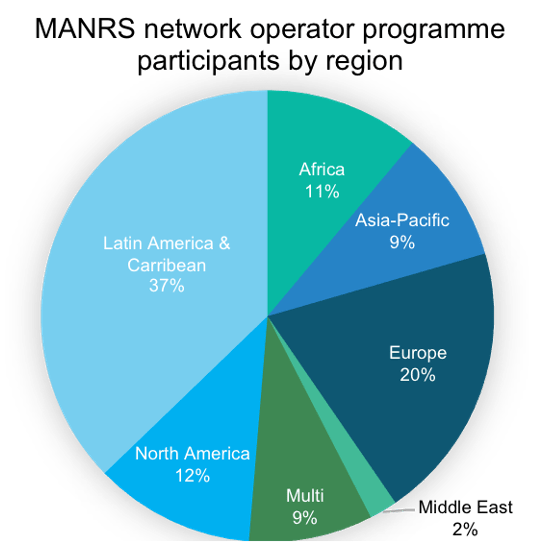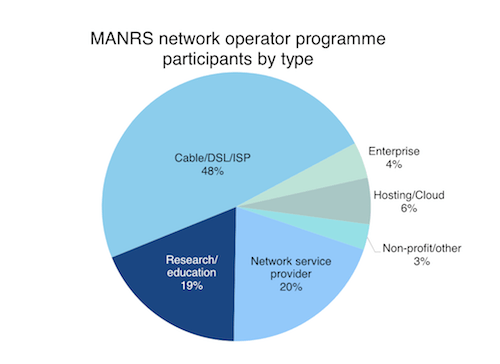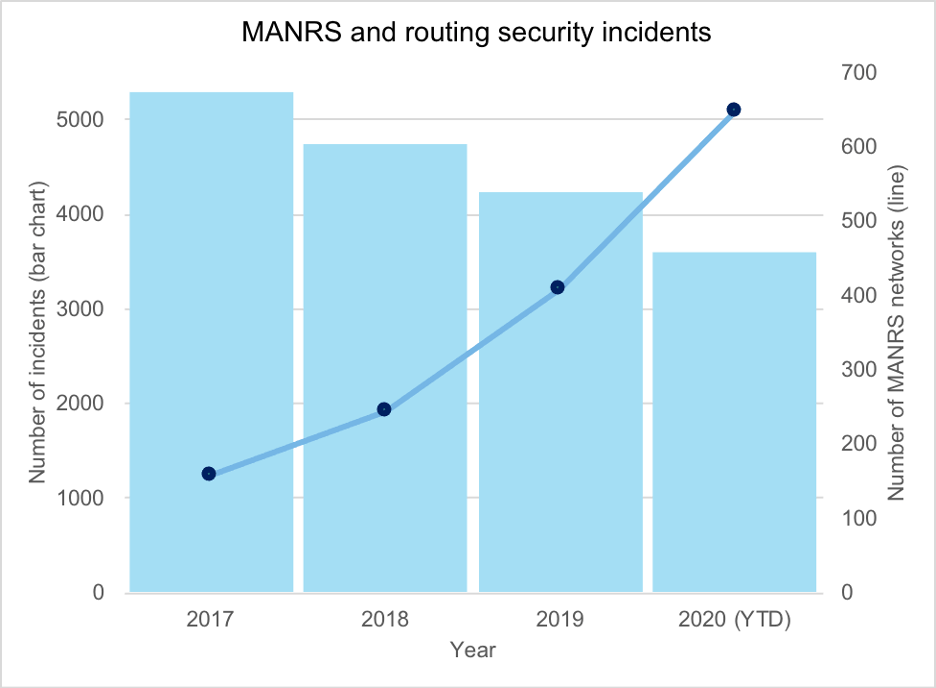Today, we are glad to share a milestone for the Mutually Agreed Norms for Routing Security (MANRS) initiative: the number of participants in the network operator program has reached 500.
By joining the community-driven initiative, these network operators, big and small, from around the world have taken specific, concrete actions to improve the resilience and security of the Internet’s inherently insecure routing infrastructure.
Systemic security issues about how traffic is routed on the Internet make it a relatively easy target for criminals. MANRS helps reduce the most common routing threats and increase efficiency and transparency among Internet service providers (ISPs) on peering relationships.
The growth of the network operator program – the oldest among three today – has been accelerating in recent years. Launched in 2014 with a group of nine operators, the number of participants in the program took four years to reach 100 in 2018 and has risen sharply in the last two years, with 156 joining in 2019 and 244 so far in 2020.
The 500 network operators manage 651 autonomous systems in total, as some of them manage multiple networks.
Meanwhile, the Internet Exchange Point (IXP) program, which we launched in 2018, now has 60 participants, while the Content Delivery Network (CDN) and Cloud Providers program, launched in April, has 14.
Who Are the Participants?
Participants in the network operator program are based in more than 60 countries across all continents, with Brazil leading the way with 139 participants, followed by the US with 57. Here is a snapshot of the top countries in the network operator program as of November 2020:
| Country | Number of participants | |
| 1 | Brazil | 139 |
| 2 | US | 57 |
| 3 | Multi* | 44 |
| 4 | Italy | 24 |
| 5 | UK | 17 |
| 6 | Germany, Japan, and Netherlands | 13 |
| 7 | Canada | 12 |
| 8 | Bangladesh, Russia | 9 |
| *Multi denotes networks based in more than one country. | ||
Looking at participation regionally (see chart below), South or Latin America has a sizable lead over the next region, thanks largely to the particularly strong showing in Brazil. Europe and North America come second and third, respectively. This chart shows we clearly have a lot more work to do in regions like Africa, Asia-Pacific, and the Middle East!

So, what do the participants do? As seen in the following chart, almost half of them are ISPs, according to self-reported data from PeeringDB. They typically provide services including Internet access, both cable and Digital Subscriber Line, Internet transit, and web hosting, among others. Other prominent groups include network service providers, whose main functions include providing ISPs with access to the Internet backbone, and research and education networks.

The Impact of MANRS
The number of reported routing incidents has been on the decrease from more than 5,000 in 2017 to below 4,000 this year so far (as of November 2020), while the number of MANRS networks in all three programs is on a clear uptrend in the period, according to data from BGPStream and MANRS.
While this does not mean one caused the other, a correlation can be observed. Other factors, including the rising awareness of good routing practices and other similar efforts, also played a part. Nonetheless, we are deeply encouraged by the positive change MANRS has contributed to.

Making Progress Together
MANRS shows that when the community comes together to create a baseline of routing security for network operators around the world, we can protect the core of the Internet. The rapid growth of the community also shows there is a growing sense of shared responsibility among network operators.
The interconnected nature of networks means that many solutions only work when other networks make the same improvements. Since no single operator can go it alone, it is through collective actions, like MANRS, that progress is made.
Much More to Be Done
Looking ahead, we will continue to advocate MANRS participation among network operators, IXPs, and CDN & cloud providers, where we can make the biggest impact. In 2021, we will also be working with equipment vendors in a new program – stay tuned for more information on this!
Among the many new and exciting activities we have in store in 2021, we plan to continue offering leadership initiatives, such as the MANRS Ambassador and Fellowship Programs, engaging different communities, and building capacity among network engineers around the world.
Whether you run an ISP, IXP, CDN or cloud network, please join the growing MANRS community to protect the Internet routing system together.
Image by San Fermin Pamplona-Navarra via Unsplash

